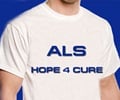Small aggregates (trimers) rather than larger clusters of abnormal SOD1 protein in amyotrophic lateral sclerosis may be toxic to nerve cells, leading to their damage and death.
- Small aggregates (trimers) rather than larger aggregates of abnormal SOD1 protein found to be highly toxic to nerve cells resulting in their damage and death in amyotrophic lateral sclerosis (ALS).
- ALS or Lou Gehrig's disease is a rare but progressive neurological condition marked by damage to nerve cells in brain and spinal cord causing difficulty of voluntary muscle activity such as walking, talking and chewing.
Aim of Study
- Many neurodegenerative diseases such as Alzheimer’s disease ALS, Parkinson's disease and Huntington’s disease are characterized by formation of large protein aggregates within nerve cells.
- Several drug treatments have been developed to target and eliminate these larger abnormal protein clusters but they have been found to be ineffective in several clinical trials.
- Additionally, there is no evidence to show that these large protein aggregates are harmful to nerve cells; on the other hand, earlier studies have shown that "trimer" structures made of just three copies of the SOD1 protein are toxic and cause injury and death to neurons in ALS.
Details of Study
The study was conducted by a team of scientists including senior author Nikolay Dokholyan, PhD, the Michael Hooker Distinguished Professor of Biochemistry and Biophysics at UNC-Chapel Hill and lead author Cheng Zhu, PhD, a postdoctoral researcher in his lab.- The team found a mutation that stabilizes the protein aggregates in the trimeric form, which normally occurs only transiently, thereby enabling its analysis.
- The team also successfully expressed mutant forms of the SOD1 protein (not necessarily trimers) in test cells that closely resembled neurons affected in ALS.
Key Observations of Study
- When the test cells expressed SOD1 mutants predominantly forming trimers, the neurons died much more quickly than control cells expressing normal SOD1 protein.
- The trimer-expressing cells even died more quickly than cells expressing other mutant forms of SOD1 protein similar to those found in severe hereditary ALS cases.
Thus, the findings of the study suggest that SOD1 fibrils may not be the problem in SOD1-linked ALS; rather, they might be a solution.
Normal SOD1 Protein versus Abnormal Trimeric Form
- The normal form of SOD1 protein exists as a dimer or two copy structure. Abnormal toxic trimers form when the dimers disintegrate.
"Taking a drug to promote fibril formation could be one (another) way to reduce toxicity in SOD1-ALS," Dokholyan said.
Indeed future plans in Dokholyan’s lab are to further delineate cellular mechanisms of toxicity due to pathological SOD1 trimers and find drugs that reduce the formation of trimers.
About SOD1 Mutant Protein Associated ALS
SOD1 gene mutation occurs in a significant proportion of ALS cases, accounting for about 12 percent of ALS cases that tend to run in families. SOD1 mutations also occur in approximately 1.5 percent of ALS cases that do not obviously run in families. All these mutations destabilize the protein's normal (dimeric) structure and promote formation abnormal aggregates of the SOD1 protein with resultant pathology.Conclusion
The
findings of the study provide an insight into the possible reasons for nerve
cell damage in neurodegenerative diseases and may fuel further research and aid in the development of novel drugs that target the toxic abnormal trimeric form of SOD1 protein.
"Although SOD1-associated ALS represents a small fraction of all ALS cases, uncovering the origins of neurotoxicity in SOD1 aggregation may shed light on the underlying causes of an entire class of neurodegenerative diseases," Dokholyan said.
References:
- Cheng Zhu el al., "Large SOD1 aggregates, unlike trimeric SOD1, do not impact cell viability in a model of amyotrophic lateral sclerosis," PNAS (2018). http://www.pnas.org/cgi/doi/10.1073/pnas.1800187115















